Browse in the Library:
| Artist or Composer / Score name | Cover | List of Contents |
|---|---|---|
| (500) Days Of Summer Piano Theme ( Mychael Danna, Rob Simonsen) | (500) Days Of Summer Piano Theme ( Mychael Danna, Rob Simonsen) | |
| 10,000 Maniacs Because The Night Piano Solo sheet music |
 |
|
| 100 Golden Standards The World’s Best Piano Arrangements by the greatest pianists of the Century |
 |
The World’s Best Piano Arrangements |
| 100 Great Keyboard Intros Songbook |
 |
100 Great Keyboard Intros Songbook |
| 100 Greatest Film Scores (Book) by Matt Lawson & Laurence E. MacDonald |
 |
|
| 100 greatest POP songs |
 |
100 greats pop songs |
| 100 Greatest Songs of Rock & Roll, Selections From Piano Vocal Guitar Sheet Music |
 |
100 Greatest Songs of Rock & Roll, Selections From Piano Vocal Guitar Sheet Music |
| 100 Hits Simply The Best – Guitar (Die besten Songs aus Pop Rock) German |
 |
100 Hits Simply The Best (Die besten Songs aus Pop |
| 100 Jazz & Blues Greats Book |
 |
100 Jazz & Blues Greats |
| 100 Jazz Solos & Etudes by Jacob Wise |
 |
100 Jazz solos |
| 100 Light Classics For Piano Solo |
 |
100 Light Classics For Piano Solo |
| 100 Most Beautiful Christmas Songs Easy Piano Vocal |
 |
100 Most Beautiful Christmas Songs Easy Piano Vocal |
| 100 Most Beautiful Christmas Songs Piano Vocal Guitar |
 |
100 Most Beautiful Christmas Songs Piano Vocal Guitar |
| 100 Must-Know Jazz Tunes with MP3 audio tracks to Play Along |
 |
100 Must-Know Jazz Tune – C version |
| 100 of the Best Movie Songs Ever! Piano Vocal Guitar |
 |
100 best movie songs 1&100 best movie songs 2 |
| 100 Of The Best Songs Ever For The Keyboard by Daniel Scott |
 |
100 Of The Best Songs Ever For The Keyboard |
| 100 Piano Solos (100 popular standards of today arr. by Frank Booth) with guitar chords |
 |
100 piano solos 1 |
| 100 Pop Hits Of The 90’s by Dan Coates |
 |
100 Pop Hits Of The 90’s by Dan Coates |
| 100 Rock N Roll Standards Piano Vocal Guitar chords |
 |
100 Rock N Roll Standards Piano Vocal Guitar chords contents |
| 100 Songs For Kids – Easy Guitar Lyrics with Tablature |
 |
100 Songs For Kids – Easy Guitar Lyrics |
| 100 Tunes Every Musician Should Know Professional Chord Changes And Substitutions By Dick Hyman |
 |
100 Tunes Every Musician Should Know Professional Chord Changes And Substitutions By Dick Hyman |
| 100 Ultimate Blues Riffs For Piano Keyboards |
 |
100 ultimate riffs jazz piano |
| 100 Women Of Pop And Rock 100 songs by 100 artists |
 |
100 Women Of Pop And Rock 100 songs by 100 artists Piano Vocal Guitaral Leonard |
| 100 Years Of Popular Music 1980s Part Two Piano Vocal Guitar Chords |
 |
100 Years Of Popular Music 1980s Part Two Piano Vocal Guitar Chords |
| 1000 Examples of Musical Dictation (Ladukhin, Nikolay) | 1000 Examples of Musical Dictation | |
| 1000 Words – Final Fantasy X-2.mscz | ||
| 1001 Blues Licks by Toby Wine – Piano |
 |
1001 Blues Licks by Toby Wine – Piano |
| 1001 Jazz Licks A Complete Jazz Vocabulary For The Improvising Musician (Jack Shneidman) |
 |
1001 Jazz Licks A Complete Jazz Vocabulary For The Improvising Musician (Jack Shneidman) |
| 101 Cançoes Que Tocaram O Brasil Nelson Motta (Book) (Brazilian Portuguese) |
 |
|
| 101 Frank Sinatra Hits For Buskers |
 |
101 Frank Sinatra Hits For Buskers |
| 101 Mississippi Delta Blues Fingerpicking Licks Guitar and TAB by Larry McCabe |
 |
Larry McCabe – 101 Mississippi Delta Blues Fingerpicking Licks |
| 101 Must-Know Blues Licks (Guitar Educational) (Wolf Marshall) PDF + MP3 audio tracks Play Along with Tablature |
 |
101 Must-Know Blues Licks (Guitar Educational) (Wolf Marshall) |
| 1015 Songs – The Original Musicians’s (Musicals) |
 |
1015 Songs – The Original, Musicians’s (Musicals) |
| 106 Songs Everybody Plays |
 |
106 Songs Everybody Plays |
| 11 Short Classical Piano Pieces |
 |
11 Short Classical Piano Pieces |
| 116 Arrangements Of Baroque, Classical & Ballet Pieces For Piano Solo |
 |
116 Arrangements Of Baroque, Classical & Ballet Pieces For Piano Solo |
| 129 Easy Pieces For Piano Solo, also for beginners |
 |
129 easy pieces for piano solo |
| 12th Street RAG – Liberace Collection Book of 5 compositions |
 |
 |
| 12th Street Rag by Euday Bowman (Piano Solo sheet music, Noten, partition, partitura, spartito).mscz | ||
| 150 Best Songs For Acoustic Guitar |
 |
|
| 150 More Of The Most Beautiful Songs Ever (Songbook) Piano Vocal Guitar |
 |
150 More Of The Most Beautiful Songs Ever (Songbook) Piano Vocal Guitar |
| 150 Of The Best Jazz Standards Ever |
 |
150 Of The Best Jazz Standards Ever |
| 150 Of The Most Beautiful Songs Ever 3rd Edition |
 |
150 Of The Most Beautiful Songs Ever 3rd Edit1 and 150 Of The Most Beautiful Songs Ever 3rd Edit2 |
| 16 Pop and Movies Hits Keyboard Piano Book (Mike Emerson) |
 |
16 Pop and Movies Hits Keyboard Piano Book (Mike Emerson) |
| 1600 Pennsylvania Avenue The Musical By Leonard Bernstein And Alan Jay Lerner Vocal Selections |
 |
|
| 17 Moments of Spring – Mgnovenia (Mikael Tariverdiev) | ||
| 1812 Overture Op. 49 Thaikovsky (arr. piano solo) |
 |
|
| 1950s Jazz (Fake Book lead sheet music) |
 |
1950s Jazz (Fake Book lead sheet music) |
| 20 Century Fox Theme Transcription By Deusde Coppen |
 |
|
| 20 Modern BEBOP Licks – by Noah Kellman All Keys with left hands chords |
 |
20 Modern BEBOP Licks – by Noah Kellman All Keys with left hands chords |
| 200 Jazz Standards Tunes (chords progressions for C Instruments) Bob Taylor |
 |
200 Jazz Standards Tunes (chords progressions for C Instruments) Bob Taylor |
| 200 Of The Best Songs From Jazz Of The ’50s | jazz of the 50s | |
| 2014 Top Hits Of 2014 Songbook Piano Vocal Guitar |
 |
2014 Top Hits Of 2014 Songbook Piano Vocal Guitar |
| 2016 Top Hits Of 2016 Songbook Piano Vocal Guitar |
 |
2016 Top Hits Of 2016 Songbook Piano Vocal Guitar |
| 2018 Greatest Pop Movie Hits Songbook For Piano |
 |
2018 Greatest Pop Movie Hits Songbook For Piano |
| 2019 GREATEST POP MOVIE HITS SONGBOOK FOR PIANO PART 2 Piano sheet music (Jim Presley) |
 |
2019 GREATEST POP MOVIE HITS SONGBOOK FOR PIANO PART 2 Piano sheet music (Jim Presley) |
| 2020 Greatest Pop Piano Sheet Music Book Songbooks For Piano |
 |
2020 Greatest Pop Piano Sheet Music Book Songbooks For Piano |
| 20th Century Classics Volume 1 |
 |
20th Century Classics Volume 1 |
| 20th Century Jazz Guitar by Richie Zellon (with Tablature) |
 |
20th Century Jazz Guitar by Richie Zellon |
| 20th Century Masters Of Fingerstyle Guitar by John Stropes |
 |
20th Century Masters Of Fingerstyle Guitar by John Stropes |
| 20th Century Piano Music – Book (1990) David Burge |
 |
20th Century Piano Music Book (1990) David Burge |
| 24 Etudes Op.35 – Fernando Sor (1778 – 1839) (Musescore File).mscz | ||
| 24_Preludes_Op.34 Shostakovich.mscz | ||
| 25 Short Classical Guitar Pieces (with Tablature) |
 |
25 Short Classical Guitar Pieces |
| 262 Classic Piano Rags Various Composers |
 |
262 Classic Piano Rags Various Composers |
| 273 Easy And Intermediate Piano Pieces |
 |
273 Easy And Intermediate Piano Pieces contents |
| 28 Modern Jazz Trumpet Solos Book 2 |
 |
28 Modern Jazz Trumpet Solos Book 2 |
| 3.10 to Yuma (Marco Beltrami) | ||
| 30 Best Rock Guitar Songs Ever (Guitar TABs) |
 |
30 Best Rock Guitar Songs Ever (Guitar TABs) |
| 300 Sacred Songs Melody Lyrics Chords Fake Book Melody Lyrics Chords |
 |
300 Sacred Songs Melody Lyrics Chords Fake Book Melody Lyrics Chords_compressed |
| 36 Christmas Carols Songs |
 |
36 christmas carols songs |
| 38 Special Guitar Anthology Guitar Recorded Vers. with Tablature |
 |
38 special guitar anthology |
| 39 Progressive Solos For Classical Guitar (with Tablature) |
 |
39 Progressive Solos For Classical Guitar |
| 39 Progressive Solos For Classical Guitar Book 2 (with Tablature) |
 |
39 Progressive Solos For Classical Guitar Book 2 sheet music pdf |
| 40 Easy Guitar Pieces (Painted with the Sound) |
 |
|
| 49 Most Popular Jazz Songs |
 |
49 Most Popular Jazz Songs |
| 5 Christmas Songs Sheet Music Trumpet in B & Piano accompaniment (Viktor Dick) | 5 Christmas Songs Sheet Music Trumpet in B & Piano accompaniement (Viktor Dick) | |
| 50 Broadway Shows 50 Broadway Songs |
 |
50 Broadway Shows 50 Broadway Songs |
| 50 Classical Guitar Solos In Tablature (Howard Wallach) with Tablature |
 |
50 Classical Guitar Solos In Tablature (Howard Wallach) |
| 50 Essential Bebop Heads Arranged For Guitar Tablature (best lines Charlie Parker, Dizzy Gillespie, Thelonious Monk and more) |
 |
50 Essential Bebop Heads Arranged For Guitar Tablature (best lines Charlie Parker, Dizzy Gillespie, Thelonious Monk and more) |
| 50 Jazz Standards Every Jazz Musician Needs To Know with MP3 audio tracks to Play Along |
 |
50 Jazz Standards Every Jazz Musician Needs To Know – C version |
| 50 Most Popular Classical Melodies (Easy Piano) |
 |
50 Most Popular Classical Melodies |
| 50 Of The Most Beautiful Piano Love Songs Solos Ever. |
 |
50 OF THE MOST BEAUTIFUL PIANO LOVE SONGS SOLOS EVER |
| 50 Piano Arrangements Of Hymns And Gospel Songs (Fred Bock’s Best) |
 |
50 Piano Arrangements Of Hymns sheet music |
| 50 Piano Classics – Easy |
 |
50 piano classics |
| 50 Riffs For Blues Guitar – Martin Shellard with MP3 audio to Play Along with Tablature |
 |
50 riffs for blues guitar |
| 500 Piano Intros For The Great Standards – Steinway |
 |
500 piano intros |
| 55 Country Classics (Voice, piano, Guitar) |
 |
55 Country Classics (Voice, piano, Guitar) |
| 557 Jazz Standards (Sheet Music – in C for all instruments) swing to bop (lead sheet) |
 |
Standards (Sheet Music – Piano) |
| 60 Progressive Solos For Classical Guitar By Mark Phillips (with Tablature) |
 |
|
| 67 Fun Songs arranged by Jon Schmidt (Piano) |
 |
|
| 70’s Hits (Easy Piano Solos) – Hans-Gunter Heumann [Piano, Vocal, Chords] |
 |
 |
| 750.000 anni fa.l’Amore (Banco del Mutuo Soccorso) | ||
| 75th Anniversary A Tribute In Music From The 20s Through The 90s Various Artists Warner Bros |
 |
75th Anniversary A Tribute In Music From The 20s Through The 90s Various Artists Warner Bros |
| 78 Quarterly No 1 and 2 (1967) Book magazine |
 |
|
| 8 ½ Theme (Nino Rota) | ||
| 8 Femmes (Krishna Levy) | ||
| 8 Jazz scales you need to know.mscz | ||
| 80 Most Requested LDS Songs (Mormon music) |
 |
80 Most Requested LDS Songs (Mormon music) |
| 88 Piano Classics For Beginners – David Dutkanicz |
 |
88 Piano Classics For Beginners – David Dutkanicz |
| 88 The Giants Of Jazz Piano by Robert L. Foerschuk (Book) foreword by Keith Jarrett |
 |
|
| 9 easy guitar pieces – Sveinn Eythorsson |
 |
|
| 97 Oeuvres pour Guitare de Jean Francois DELCAMP |
 |
97 Oeuvres pour Guitare de Jean Francois DELCAMP |
| 99 Easy Piano Pieces |
 |
99 Easy Piano Pieces |
| A Beautiful Mind – A Kalidoscope of Mathematics |
 |
|
| A Beautiful Mind – All Love Can Be | A Beautiful Mind – All Love Can Be | |
| A Beautiful Mind – Kalidoscope | ||
| A Child Is Born – Oscar Peterson (Musescore File).mscz | ||
| A Chordal Concept For Jazz Guitar by Peter O’Mara |
 |
A Chordal Concept For Jazz Guitar by Peter O’Mara |
| A Ciascuno il Suo (Luis Bacalov) | ||
| A Clare Benediction – John Rutter – Piano Solo Arr. (Musescore File).mscz | ||
| A Clockwork Orange (Beethoviana) | A Clockwork Orange (Beethoviana) | |
| A Clockwork Orange (Beethoviana) (Musescore File).mscz | ||
| A Comparative Study Of The 24 Preludes Of A. Scriabin And Sergei Rachmaninoff (book) |
 |
|
| A Complete Course of Instruction For The Piano-Forte (Dr Karl Merz) (1885) |
 |
Instruction… |
| A Cool Yule. Ten Jazzy Christmas Songs |
 |
A Cool Yule. Ten Jazzy Christmas Songs |
| A Creative Approach To Jazz Piano Harmony Bill Dobbins |
 |
A Creative Approach To Jazz Piano Harmony Bill Dobbins |
| A Creative Approach To Practicing JAZZ – by David Baker |
 |
A Creative Approach To pravtising Jazz |
| A Dance of Dragons – Blood of the Dragon (Game of Thrones) Piano solo arr. |
 |
|
| A Dictionary of Music and Musicians Vol. 4 (A.D. 1450-1880) Edited in 1889 |
 |
Thelonius Monk‘s sheet music transcriptions are available from our Library.
Thelonious Monk’s Harmony, Rhythm, and pianism (Part 1)
On February 28, 1964, jazz pianist, composer, and group leader Thelonious Monk (1917-1982) graced the cover of Time magazine, then America’s major newsweekly. Coming at the height of the civil rights movement and amid dawn-ing recognition for African Americans’ achievements, it was a true breakthrough into mainstream media for him and for jazz.
The moment was short-lived, with rock-and-roll’s ascendancy to cultural dominance just around the corner, but it was also well-earned: Monk had been producing extraordinary music—often under difficult social and personal circumstances—for almost two decades, and would continue to perform for another nine years.
Gnomic and inscrutable, he also magnified, for better or worse, popular clichés about the jazz artist as insouciant, hipster weirdo—aspects played up in Time’s account, and undoubtedly part of the reason its editors had singled him out, for the moment, as jazz personified.
Yet despite the typecasting, Monk was actually an unlikely icon, musically and personally. Jazz comprises a cluster of genres bound loosely by a symbiosis of individualism, commercial concerns, and high art leanings, but even given this, Monk’s playing was in many ways too idiosyncratic to fi t in to any niche. His music differed more from his contemporaries than theirs did from each others’. His small hands and distinctive piano technique often gave cause for his very skill and competence to be called into question, sometimes not without reason. Such perplexities complicated Monk’s reputation and that of jazz itself, which he was both part of and apart from.
And as if to enhance this otherworldly aura, after touring and recording almost continually from the late 1940s until the mid-1960s, he simply faded away. He stopped playing piano soon after his last record-ings in 1971 and retired into semi-seclusion for the last decade of his life. Yet both his musical legacy and mythic status have continually strengthened ever since.
Our own lifelong obsessions with Monk’s music started in the 1970s. It was a romance of recordings: the only performances we ever saw were on film, and that was much later. For us back then, “Thelonious Monk” was an outré persona conjured by liner notes and cover art. The cover of one LP— Monk’s Music, from 1955—showed him writing music while perched in a child’s red wagon, donned in hipster’s garb and sunglasses; another— Underground, his last Columbia recording, from 1968—set Monk as WWII French resistance fighter, seated at an upright piano in a barn hideout, with several open bottles of wine, a live cow, weaponry, and a captured Nazi in tow.
These manufactured images suggested ways for the public to digest the music: Monk as idiot-savant, genius-child, rebel-recluse—a collection of quirky, individualistic, American countercultural personas. But, however these images may have hooked us as teenagers, we could not fail to hear his music as indispensable.
His deadpan playing, stocked with “scribbled lightning”, and jabbing, stabbing, amazing chords, textures, rhythms, empty spaces, and clusters, was riveting, at once instantly recognizable, diverse and unpredictable, and full of the divine laughter that made it both deadly serious and hilariously funny. It invaded our musical selves-in-formation and led to insatiable fixation. Of course, we were among many trying to internalize Monk and make him part of us. This chapter harvests fruits of our Monk incubation, and the friendship built partly from it.
Here we also position Monk to represent the multiplicity of jazz, some-thing for which no one artist or performance is suited, and yet, for the same reasons Time chose him, no one is as well suited as he. Our aim is not so much to depict the dimensions of Monk’s style as it is to show what he was able to achieve on one particular occasion. We consider a renowned April 1957 solo piano recording of “I Should Care” (hereafter ISC) , a song composed around 1944 as a number for the boilerplate Hollywood movie Thrill of a Romance and known to the public through recordings by Jimmy Dorsey, Frank Sinatra, and others. It appeared repeatedly on the 1947 hit parade and was almost immediately adopted by Monk, (pianist) Bud Powell, and myriad other players.
Our choice of a “standard,” rather than one of Monk’s numerous seminal original compositions, is deliberate, allowing us to focus on the deeply symbiotic relationship between Monk and the jazz mainstream, a microcosm of the relationship between jazz and American popular music as a whole.
Monk’s decision to create a personalized, at least seemingly improvised (though in fact hardly at all) rendition of a popular song is itself “standard” practice for jazz. In general Monk’s taste in standards leaned toward the popular music of his youth, but he seems to have had a particular fascination with ISC: he recorded it at least four times for as many record labels, over a span of twenty years. Our chosen ISC is especially concentrated and allows us to frame Monk’s idiolect against the background of some of the era’s musical conventions and their milieu.
Jazz, Monk, and Modern Jazz Technique
Jazz and Jazz Analysis
In the United States jazz was long ago pronounced “America’s classical music,” a phrase used so often as to now elude original attribution. Many Americans regard this African-American form as a birthright and know it when they hear it, even if hard-pressed to say what it is that makes it “it.” Born in late nineteenth-century New Orleans, it long ago permeated global culture, provoking cultural responses by the 1920s in places as distant as Japan and China.
To have even a passing acquaintance with Western culture is to have some awareness of jazz as an idea involving musical self-expression through improvisation. Beyond the “jazz buffs” that live in every country, this awareness can be expressed in indirect, idiosyncratic ways: a “jazzy” turn of phrase in a Bollywood production number, a rural Japanese man belting Sinatra-style while fronting his local high school’s jazz band, or a lip-synching crooner in a Manila transvestite bar. These and thousands of other appropriations attest to jazz’s potency.
Jazz history is often described in terms of a series of fast-morphing eras (until a pluralistic stasis set in after the mid ’70s)—Dixieland, hot jazz, swing, bebop, cool, hard bop, free jazz, fusion, and so on—whose musics evolved but were also retained in coexistence. Throughout, it has been girded by poly-rhythmic, cyclical, repetitive principles tracing back to the West African music of slave ancestors, the dialects of song and rhythm in earlier African-American music (the blues, spirituals, etc.), the strophic ballad and popular song forms of Anglo-America, and the harmony and instruments of European art music. Jazz digested, synthesized, and transformed all of these.
The bebop style of Monk’s era was typically played by combos of up to six players comprised of piano, stand-up bass, drum trap set, and possibly electric guitar (all comprising the rhythm section) , fronted by saxophone(s), trumpet(s), or trombone(s). Most performances use the melody or “head’” of a popular song or a newly composed tune to launch solo improvisations stated over the tune’s cyclically repeated harmonies, which are rendered by the rhythm section in constantly changing accompaniment patterns.
Rhythm section members also take solos. Bebop players such as Charlie Parker (saxophone), Dizzy Gillespie (trumpet), and Bud Powell (piano) perfected a vocabulary of scales and patterns that brought out the color and quality of the “changes” (the chord sequence) while flying far from the original melody.
Jazz is improvisation, and the image of the spontaneously creative soloist, playing instinctually, is powerful. Some players can and do spin off very different solos from take to take and/or from night to night, but most draw from a personal lexicon of phrases, large and small, that constitute a player’s style.
The degree to which great improvisers plan their solos varies, and the line between improvisation and composition is fluid. Aficionados have always known this, but today the ready availability of myriad “alternate takes” by Charlie Parker, Monk, and innumerable others proves that jazz improvisation can be a highly calculated act. The fixed, solo arrangement of ISC we selected is a case in point.
Jazz analysis, like all analysis, begins with listening, and is a multistage process proceeding from general stylistic features to consideration of players’ own styles, and finally to the details of a performance.
Knowledgeable listeners weigh a critical mass of musical markers including instrumentation, form, harmony, tempo, and rhythmic subdivision to identify and appreciate individual players. Even should such a listener first hear a recording of ISC “blind-folded”—that is, without being told who is playing—and fail to recognize Monk’s musical signatures, he or she could still place the music at circa 1945-1965. This was an era encompassing related styles (bebop, cool, West Coast, and more) that we refer to for convenience as the era of modern jazz.
The integrity of any durable genre rests on the tensile strength of its basic principles; Monk’s relationship to modern jazz is a characteristic one of testing these strengths. Among the features relevant to this performance are certain types of harmonic and rhythmic complexity seen in relation to musical form, and a range of ways of laying these out on the piano keyboard.
To analyze ISC in terms of these features, we will first survey their treatment in the genre. Then it can emerge how Monk mobilizes rhythm (especially fl fluctuations of tempo) and harmony on the one hand, while retaining form and melody on the other, to create a layered, asymmetrical reading of this standard song.
We later refer to a full transcription (figures 4.5 and 4.6) through which we can fi x the performance in our minds at a glance. But even though we made every effort to make it accurate in pitch and harmony (though one can never be sure) and urge the reader to play it, not even a note-perfect performance will make it sound like Monk. This is because he plays with an embodied hand and finger pianism that even neurological and psychological description could hardly capture, let alone conventional music notation.
Monk’s touch at the keyboard vividly shapes surface rhythm and the envelope of the sound—its attack and decay contour. Playing it is worth doing, how-ever, to encounter the sonic diversity of his style and wealth of unexpected piano sonorities.
Form and Fusion
ISC is composed in one of a small number of easily recognizable thirty-two-measure popular song types of the era (the top staff of figure 4.1 gives the melody). It consists of two sixteen-measure periods that are parallel, in the sense that the first eight measures of each are identical and the second eight differ.
This can be thought of formally as ABAC, in which each letter designates eight bars of melody and chords (actually the very first measures of B and C are also the same). Songs of this genre were written to be recorded by professionals and, if successful, were published as sheet music for amateurs.
The sheet music arrangements, distributing the tones of the chords in various ways on the keyboard, were dispensable, but the harmonies were also represented by shorthand chord symbols (about which more below).
A lead sheet consisting of these symbols over a single staff with the notated melody circulated among jazz players; a version of this can be seen by combining the top staff of figure 4.1 with the first row of symbols below the second staff. This version is from The Real Book, a latter-day “fake book” (originally a samizdat anthology of lead sheets for standard tunes and modern jazz compositions).
The “double period” form of ISC stems from European models. In non-jazz performances, such as for film or singers’ nightclub acts, the songs last only as long as their words; that is, the music is read off the arranger or com-poser’s notation and repeated (with preplanned small variants) as many times as necessary to sing the entire lyric. This is as it would be in many a Brahms Lied or an aria da capo in Mozart opera.
But jazz is a deep fusion of European and African music. This integration of independent, but in many ways compatible, musical systems was not only an ingenious cultural project directly contradicting the segregated social realities of America, but could be seen as providing that society with a compelling model of how to overcome those difficulties.
Jazz harmony has roots in African melody based on flexible, unstandardized fi ve- or seven-tone scales, but it acquired new depth of field (the range of colors and sensations of unique relation to a stabilizing “tonic” center that harmony evokes) by ingesting Europe’s twelve-tone chromatic scale and its system of functional harmonic progressions. At a time when European composers largely eschewed it, jazz took up the mantle of enriching functional harmony.
Figure 4.1. Melody and four harmonizations of I Should Care, with chord roots and harmonic functions.

Figure 4.1 (continued)

Jazz form evolved to become a cycle of harmonies reminiscent of analogous (though briefer) cycles in much African music, as well as in circular European forms based on a repeating bass line, such as the passacaglia. African cycles are configured with rhythmic and melodic patterns. These are given multiple, varied repetition, with the patterns locked in and aligned with the unchanging cyclic structure. Such isoperiodicity also defines most jazz, with regularly recurring chord progressions (“changes”) instead of rhythms or melodies.
Variation may last for as many cycles (isoperiods) as the soloist per-forms, organized by the harmonies linked to the cycle. Cycle and progression, seemingly as contradictory as circle and line, thus reconcile.
Jazz Harmony
So that Monk’s style can soon be broached, let us pause to clarify our usage of three terms already in play:
• Harmony: one of three essential functions of motion or rest perceived from pitch combinations at a given place in the form. These are the stable tonic (T) and the unstable dominant (D; leading to a tonic) or subdominant (S; leading to a dominant).
• Chord: specific root (fundamental tone) and quality (interval structure and sound) of a harmony specifi ed by the lead sheet.
• Voicing: the specific, registrated pitches used to realize a chord.
Harmonic progression in European art music evolved from a conception of counterpoint that wove the simultaneous tones of concurrent melodies into a few stable chordal structures while retaining nuances like anticipation, suspension, and other kinds of melodic dissonances—tones that do not belong to a stable chord and that must resolve to those that do, else the tone combination parses as unstable. Stable chords contain only three tones in European practice. Such triads come in and out of focus when the music’s polyphonic strands either line up or diverge.
Counterpoint oversees the management of dissonance, and this process, at various orders of magnitude, generates both harmony and form in great variety. Western music’s variation forms, similar to jazz in some ways, act to restrain this tendency. But more culturally significant and musically distinctive is the fact that counterpoint, with its prolongation of dissonance and harmonic progression, historically urged Western music in extremis to long operas, symphonies, and other noncyclical structures.
In jazz, counterpoint and dissonance shape melodic lines and chord progressions, but cyclic structure prevails.
The role of harmony is to identify, with particular colors (i.e., chords and voicings), the region of the cycle through which one is passing. Jazz harmonies are glued to their positions; nothing can dislodge them. It is not the chords themselves that are glued there, but their harmonic functions, and this allows (as we shall see) for many ways to substitute different chords of equivalent function, or to severely alter chords so long as their function is preserved. The functions have such a forceful progressive logic that the practiced ear can distinguish which of the many tones that may be sounding are operative in establishing the harmony, and which are more or less ornamental.
Even if crucial tones are absent, expert listeners can infer harmonic function from the context.
What identifies harmonies and how they are realized in sound must thus not be thought of as the same thing; indeed, the two can vary seemingly to the point of severing their relationship—but not quite.
Harmonic Principles and Chords
Songs like ISC are composed in the tonality of one of the twelve equal- tempered chromatic notes, and end with tonic harmony, though some, like ISC, do not begin with it. The tonality, which may be major or minor in quality, shifts fluidly and temporarily at many points in the cycle. We restrict discussion to ISC’s home key of D major for illustration; figure 4.2a shows the root-position triads (major, minor, or diminished) in open note heads with Roman numerals, indicating the scale tone that is the root of the chord, on the first line below the staff.
The second line below the staff labels each with tonic (T), dominant (D), or subdominant (S) function. With rare exceptions, a jazz chord has a harmonic meaning only if it can be confi dently heard as having one of these three functions. Thus III and VII chords are rare in jazz major keys because the former is function-ally ambiguous and the role of the latter is understood as a weak version of V.
In fact, each of the S, T, and D functions is normally linked to a single chord, which progresses to one of the others strongly because their roots are a fifth apart: II for S, V for D, and I for T. IV and VI chords are very often heard as equivalent to ii (note that the roots of ii, IV, and VI together form a II triad). The constituent tones of III, IV, VI, and vii chords may appear as voicings of other chords, or the chords may function in other keys where they play the roles of II, V, or I.

Jazz chords and voicings were influenced both by the tonal language of other African-American forms such as the blues, and by the sonorities of early twentieth-century French composers like Debussy and Ravel.
Evolving style came to allow sevenths (tones that are the interval of a seventh above the root; shown with black note heads) not to be considered dissonant, and to inhere to virtually all chords.
This is also true of many other nontriad tones (figures 4.2b and 4.3), but sevenths are essential and assumed. Adding them to triads produces seventh chords of various distinctive qualities depending on the type of the triad and the size of the seventh. The major seventh chord (labeled M7) has a major triad plus major seventh. The dominant seventh chord (labeled 7) is the same but with a minor seventh. The minor seventh chord (m7) has a minor triad plus minor seventh, and in the half-diminished seventh chord (m7b5) the minor seventh is joined to a diminished triad.
These are labeled in the fourth line below the main staff of figure 4.2a.
Mention of the half-diminished seventh chord occasions a brief diversion into the role of major and minor tonalities in jazz. The exact nature of this relationship is multifarious, varying from era to era and player to player, and intertwined with devices absorbed from other practices such as the blues. As with much European tonality, the distinction between major and minor modes is retained as an overall affect—in other words, tunes are one or the other—but in actual practice the two freely commingle. In essence, this comes down to the unique case of the half-diminished seventh chord, built on the second degree of the minor scale.
Consider that in D major in jazz, one may often encounter an E-rooted seventh chord that uses Bb, from D minor, instead of B, making the chord a half-diminished seventh rather than a minor seventh. Also, as shown above the staff in figure 4.2a, the VII chord in D major has the same root and half- diminished-seventh quality of the II7 chord in B minor, so it can be used to temporarily change to that key, or even to B major. And by playing a half- diminished seventh when a tonic function is expected, jazz musicians can create a chain of II–V progressions. This is our first example of “chord substitution,” a principle of harmonic modularity at the core of jazz practice (see “Chords and Voicings” below).
In jazz, motion from S to D to T functions usually refl ects root motion by fifth, as in the iconic ii–V–I progression. Mastery of jazz harmony involves the ability to manipulate ii–V–I in all keys and combinations. In D major, II–V–I is most simply expressed as Em7–A7–DM7, which occurs twice right at the beginning of ISC, but the same functional progression, transposed and with substitutions, occurs in many places throughout the song. In the fake book (the lead sheet) version shown in the second staff of figure 4.1, the vocabulary is varied, close to what an accomplished player might actually play, and the progression is sometimes interrupted. For example, the II–V in mm. 8 and 24 suggest that a richly chromatic F major is coming, but the progression is not allowed to complete.
Measures 17-20 bring a dovetailed chain of II–V motions, each one leading to the next, as the arrows show. All staves of figure 4.1 and all harmony in ISC can be explained in II–V–I terms.
Dominant function chords contain the crucial interval of the diminished fifth (also known as the tritone) between the third and seventh. In the A7 chord, this means C#7 and G. The tritone’s distinctive sound is absent from major and minor seventh chords, but their occasional substitutes, the bor-rowed half-diminished seventh and the dominant seventh sonority itself—which does double duty as tonic in blues forms—include it. The interval impels forward motion in II–V–I progressions, which sometimes concatenate and elide into strings of descending tritones in inner voices, creating, if art-fully done, a spinning vortex of dominant resolutions. The approach to and departure from the tritone is more expansive in the music of Monk’s era—and certainly to an even greater degree in Monk’s own music—than it is in classical music; it is without question the most important source of the feeling of harmonic progression in the music.
The tritone is the structural hub orienting and ordering the tremendous vocabulary of idiomatic chord voicings.
Browse in the Library:
| Artist or Composer / Score name | Cover | List of Contents |
|---|---|---|
| Will B. Morrison – Melody in F (Syncopated Waltz) sheet music |
 |
|
| Will Young – Anything Is Possible | ||
| William Best I Love You For Sentimental Reasons (Jazz Standard) | William Best I Love You For Sentimental Reasons (Jazz Standard) | |
| William Eveleth – Blues Jazz and Rock Riffs For Keyboards |
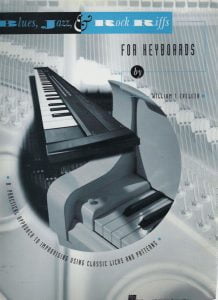 |
|
| William Gillock In Old Vienna Musescore File.mscz | ||
| William Gillock Valse Etude In Romantic Style Musescore File.mscz | ||
| William Joseph – Within (Songbook) (William Joseph) |
 |
William Joseph – Within (Songbook) (William Joseph) |
| William Robinson – My Girl | ||
| William Russo Composing Music A New Approach (ebook) |
 |
|
| Willie Dixon Preacher Of The Blues (2011) Mitsutoshi Inaba (Book) Biography |
 |
|
| Willie Fugal S Blues Piano transcription |
 |
|
| Willie Nelson – Always on My Mind Sheet Music |
 |
|
| Willie Nelson – On My Mind | ||
| Willie The Lion Smith – Finger Buster transcription |
 |
|
| Willie The Lion Smith Echo of Spring transcription |
 |
|
| Willow Weep For Me Words And Music By Ann Ronell 1932 Jazz Standard (Vintage sheet music) |
 |
|
| Wim Mertens – American Minimal Music La Monte Young Terry Riley Steve Reich Philip Glass |
 |
Book La Monte Young Terry Riley Steve Reich Philip Glass |
| Wim Mertens – Close Cover | Wim Mertens – Close Cover | |
| Wim Mertens – Struggle For Pleasure | Wim Mertens – Struggle For Pleasure | |
| Wim Mertens – Time Passing |
 |
|
| Wim Mertens Humility |
 |
|
| Wim Mertens Lir |
 |
|
| Windham Hill piano sampler |
 |
Windham Hill piano sampler |
| Windy Whistle (Le Renard et l’Enfant OST) Alice Lewis | ||
| Wings (McCartney) – Greatest Hits |
 |
Wings sheet music |
| Winifred Atwell Album Of Rags No 1 Original arrangements Vintage songbook |
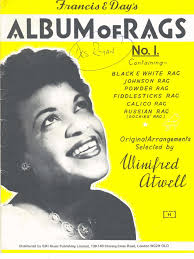 |
Winifred Atwell Album Of Rags No 1 Original arrangements Vintage songbook |
| Winifred Atwell Marguerite Monnot The Poor People Of Paris ( La Goualante Du Pauvre Jean) Piano Solo |
 |
|
| Winnie The Pooh The Honey Tree Sheet Music (Disney) |
 |
Winnie The Pooh The Honey Tree Sheet Music (Disney) |
| Winter Sonata O.S.T. (Ryu) | ||
| Winter Wonderland Other Christmas Favorites Songbook Piano Vocal guitar Chords |
 |
Winter Wonderland and Other Christmas Favorites Songbook Piano Vocal guitar Chords |
| Wish You Were Here – Pink Floyd (Musescore File).mscz | ||
| Within Temptation – Our Solemn Hour | ||
| Without you (Maria Carey) | ||
| Without You (Mariah Carey Piano Arr ) (Musescore File).mscz | ||
| Wiz Khalifa & Charlie Puth See You Again (Solo Piano) |
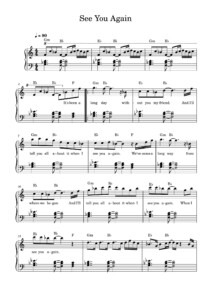 |
|
| Wolf Wagner Paraphrase Über Die Walküre |
 |
|
| Wolfe Richard Legit Professional Fake Book More Than 1010 Songs |
 |
Wolfe Richard Legit Professional Fake Book More Than 1010 Songs |
| Wolfenzon – Stücke für Klavier | Wolfenzon – Stücke für Klavier | |
| Womack, Bobby – Midnight Mover My Autobiography The True Story of the Greatest Soul Singer in the World (Book) |
 |
|
| Woman in love (Barbra Streisand) | ||
| Women Of Pop Rock Songbook Twenty-Two Hot Hits for Easy Piano |
 |
Women Of Pop Rock Songbook Twenty-Two Hot Hits for Easy Piano |
| Wonderful Christmastime -Paul Mccartney (Wings) (Musescore File).mscz | ||
| Wonderful Life – Black (Easy Piano Solo Sheet Music) (Musescore File).mscz | ||
| Woody Allen – A propósito de nada (autobiografía)(2020) |
 |
|
| Woody Allen – Apropos of Nothing (2020) Autobiography | Woody Allen – Apropos of Nothing-Simon and Schuster (2020) Cover | |
| Woody Guthrie This Land Is Your Land (Easy and Intermediate Piano Solo) |
 |
|
| World Hits Of Jazz Standard |
 |
World Hits Of Jazz Standard |
| Wuthering Heights (Ryuichi Sakamoto) | ||
| Wynton Kelly – Autumn Leaves Solo transcription | Wynton Kelly – Autumn Leaves Solo transcription | |
| Wynton Kelly – Dark Eyes Solo Piano transcription |
 |
|
| Wynton Kelly – Dark Eyes Solo Piano Transcription (Musescore File).mscz | ||
| Wynton Kelly – Full transcriptions | Wynton Kelly – Full transcriptions | |
| Wynton Kelly – I Dig of You Solo transcription |
 |
|
| Wynton Kelly – If I should Love You Solo transcription |
 |
|
| Wynton Kelly – Jazz Piano Collection |
 |
Wynton Kelly Piano Collection- |
| Wynton Kelly – Someday my prince will come (Piano solo) |
 |
|
| Wynton Marsalis Trumpet Genius Gourse, Leslie (Book) |
 |
|
| Wynton Marsalis – Caravan (Solo) |
 |
|
| Wynton Marsalis – Darn That Dream (Solo) | Wynton Marsalis – Darn That Dream (Solo) | |
| Wynton Marsalis – Dealfayos Dillema (Solo) |
 |
|
| Wynton Marsalis – Standards (sheet music transcriptions) |
 |
Wynton Marsales – Standards (sheet music transcriptions) |
| Wynton Marsalis In The Court Of King Oliver (Trumpet and rhythm section) |
 |
|
| Wynton Marsalis Omnibook For B Flat Instruments Transcribed exactly from his recorded solos |
 |
Wynton Marsalis Omnibook For B Flat Instruments Transcribed exactly from his recorded solos |
| Wynton Marsalis Struttin’ With Some Barbeque (Live) Wynton Marsalis’ Trumpet Solo |
 |
|
| Xenoblade Chronicles 2 Loneliness Kenji Hiramatsu | Xenoblade Chronicles Opening Theme Game sheet music | |
| Xenoblade Chronicles Opening Theme Game sheet music Yoko Shimomura |
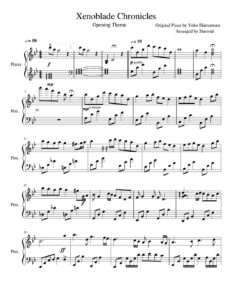 |
|
| Yamaha E443 Songbook digital keyboard PSR-E443 |
 |
|
| Yamaha Keyboard Songbook |
 |
Yamaha Keyboard Songbook |
| Yamaha Keyboard Songbook Song-Buch |
 |
|
| Yamaha PSR E373 YPT-370 PSR-EW310 Song book |
 |
|
| Yamaha Song Book |
 |
Yamaha Song Book |
| Yamaha Song book |
 |
Yamaha Songbook |
| Yamaha Songbook |
 |
Yamaha-Songbook |
| Yamaha songbook 50 Piano Greats for the piano (Yamaha collection) |
 |
50 Piano Greats for the piano (Yamaha collection) |
| Yamaha Songbook Contemporary Vol. 1 |
 |
Yamaha Songbook Contemporary Vol. 1 |
| Yana Bobalik Mysterious Music Я.Бобалік Songbook |
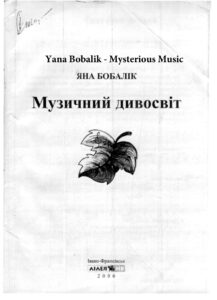 |
|
| Yana Bobalik Secret Music From Mysterious Music Я.Бобалік Таемна Музыка |
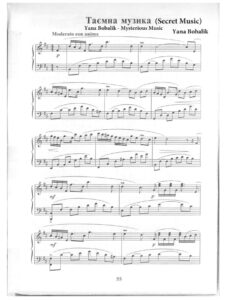 |
|
| Yann Tiersen Rue des Cascades (sheet music) | yann tiersen cascades sheet-music | |
| Yann Tiersen Mother’s Journey |
 |
|
| Yann Tiersen – Tabarly Sheet Music |
 |
|
| Yann Tiersen – Comptine Dun Autre ete | ||
| Yann Tiersen – La Dispute – Amelie Poulain | ||
| Yann Tiersen – La Valse d’Amelie Poulain | Yann Tiersen – La Valse Damelie | |
| Yann Tiersen – Le moulin – Amelie Poulain | Le Moulin – Amelie Poulain | |
| Yann Tiersen – Six pièces pour piano – Volume 2 – Amélie Poulain |
 |
Yann Tiersen – Six pieces pour piano – Volume 2 – Music Sheet |
| Yann Tiersen – Summer 78 | ||
| Yann Tiersen – Sur Le Fil |
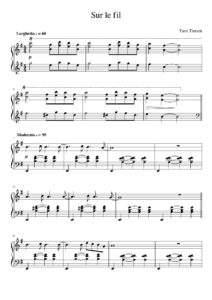 |
|
| Yann Tiersen – Pièces pour piano vol 1 et 2 + divers |
 |
Yann Tiersen – pièces pour piano vol 1 et 2 + divers  |
| Yann Tiersen Eusa 2015 Songbook |
 |
|
| Yann Tiersen J’Y Suis Jamais Alle piano solo (Amélie) |
 |
|
| Yann Tiersen Onze Pièces Pour Piano |
 |
Yann Tiersen Onze Pièces Pour Piano |
| Yann Tiersen Partitions intégrales Piano Works 1993-2004 | Yann Tiersen Partitions intégrales Piano Works 1993-2004 | |
| Yann Tiersen Tabarly Complete Book For Piano |
 |
|
| Yanni In My Time (Piano Solos) Sheet Music |
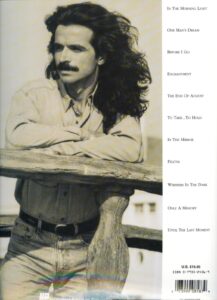 |
Yanni In my time piano solos |
| Yanni One Man’s Dream |
 |
|
| Yanni – Per Piano (Piano book) |
 |
Yanni – Per Piano |
| Yanni – In The Morning Light | ||
| Yanni – Nostalgia | ||
| Yanni – One Man’s Dream (Musescore File).mscz | ||
| Yanni -The Best of |
 |
 |
| Yanni Ethnicity Book |
 |
Yanni Ethnicity Book |
| Yaron Herman – Hallelujah (Leonard Cohen) transcription |
 |
|
| Yashal (Elisa) | ||
| Yasuharu Takanashi – Naruto Shippuden OST – Loneliness |
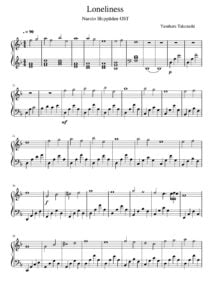 |
|
| Yedidia, Ronn Piano Sonata No 3 outcries (manuscrit) |
 |
|
| Yehezkel Raz Ballerina Piano Solo sheet music |
 |
|
| YES Fragile |
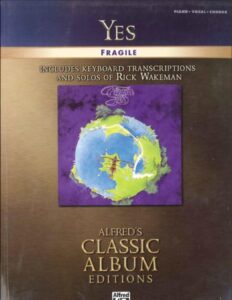 |
YES Fragile |
| YES – Complete Deluxe Edition |
 |
YES – Complete Deluxe Edition |
| Yes Close To The Edge The Story Of Yes (Book) |
 |
|
| Yes The Best Of Guitar Songbook with TABs |
 |
Yes The Best Of Guitar Songbook |
| Yesterday Piano Cello – Piano Sheet Music – Paul McCartney |
 |
|
| Yesterday Piano vocal guitar Songbook Featuring Music From the OST |
 |
|
| Yesterday The Beatles For Jazz Piano (Musescore File).mscz | ||
| Yesterday when I was young (Charles Aznavour) | ||
| Yimkin Law ( Et maintenant on va où OST) Racha Rizk | ||
| Yiruma – 27 May | ||
| Yiruma – Destiny Of Love | ||
| Yiruma – Dream | ||
| Yiruma – Dream A Little Dream Of Me | Yiruma – Dream A Little Dream Of Me | |
| Yiruma – Falling |
